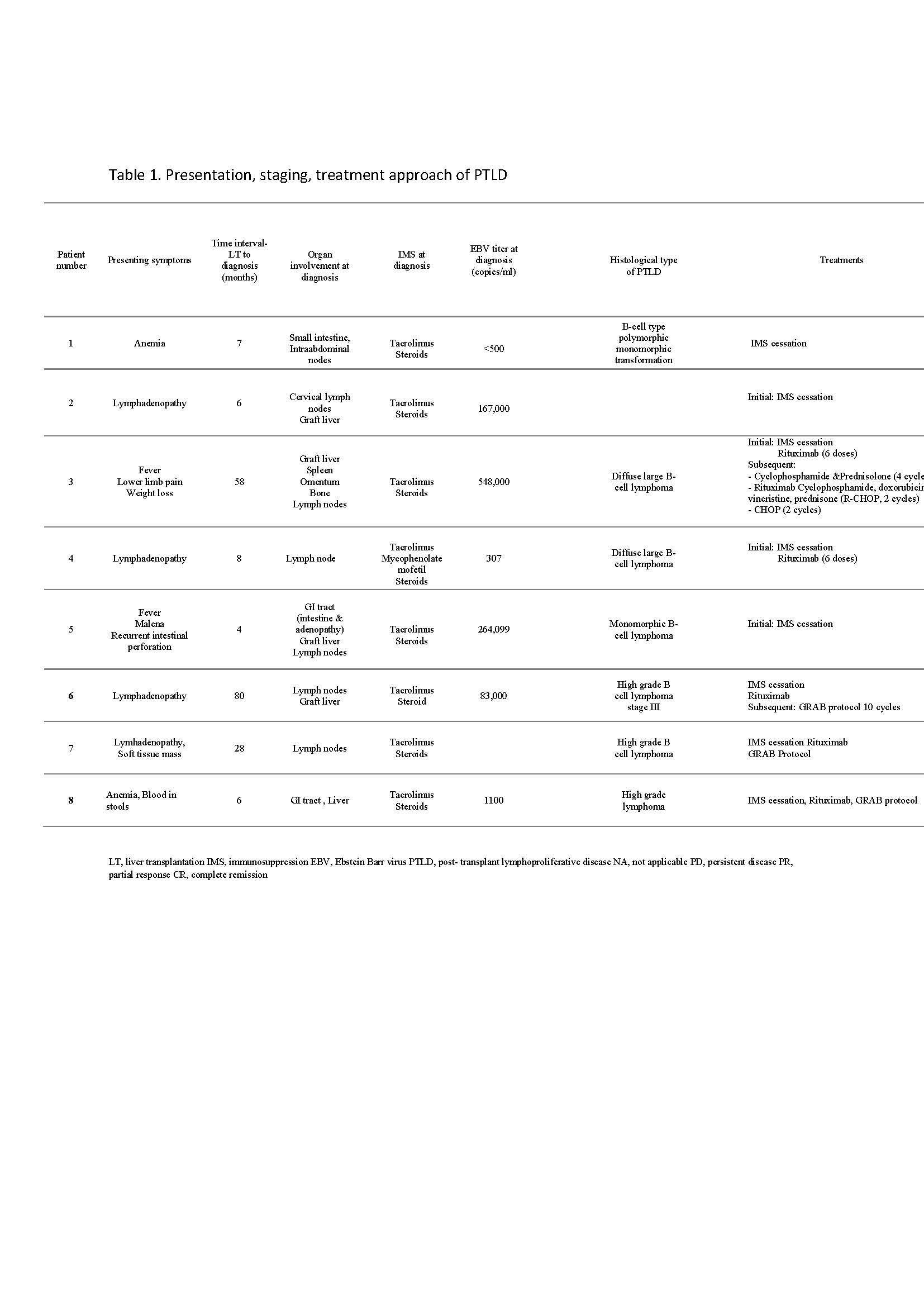Long-Term Outcomes of An Algorithmic Approach to the Management of Post-Transplant Lymphoproliferative Disorder in Pediatric Liver Transplantation
Ashwin Rammohan1, Naresh Shanmugam1, Anu Vasudevan1, Mohamed Rela1.
1Institute of Liver Disease and Transplantation, Dr Rela Institute and Medical Centre, Chennai, India
Background and Aims: Liver transplant (LT) recipients, especially in the pediatric population remain at a high risk of developing post-transplant lymphoproliferative disorder (PTLD), which in turn has an adverse effect on graft and patient survival. While there is data on the management and short-term outcomes in this age group, long-term outcomes remain relatively unknown. This study aimed to demonstrate the spectrum of PTLD, its management to highlight the long-term outcomes.
Methods: A prospectively collected database on paediatric LT (PLT) of over a decade (2011-2022) was reviewed and data on all children with PTLD analyzed. Demographics, immunosuppressive therapy, rejection episodes, clinical characteristics of PTLD, diagnosis, modes of treatment, response to treatment, and outcomes were assessed.
Results: Of 540 PLT, 8(1.4%) children developed PTLD. The median age was 45 months(12-96) and the median interval between LT and onset of PTLD was 7.5 months(2-48). Upper GI bleed with anemia(37.5%) and generalized lymphadenopathy(37.5%) were the most common presentation. Seven(87%) children had involvement of the graft liver. EBV associated PTLD was observed 75%(n=6). Classic B symptoms were seen in 25%(n=2). Marrow involvement was present in 12.5%(n=1). Multi-organ involvement was present in 50%(n=4) of patients. The treatment modalities include reduction of immunosuppression 12.5%(n=1), rituximab(25%) and 50%(n=4) chemotherapy along with rituximab. One child developed chronic ductopenic rejection. The survival at 1 year after diagnosis of PTLD was 75%(n=6). The overall graft survival and patient survival following PTLD over a median follow up period of 60 months was 75%.
Conclusion: We describe the clinical characteristics, treatment modalities and long-term outcomes of PTLD in patients who underwent LDLT. Early diagnosis and appropriate treatment have shown to improve patient and graft survival in PTLD.
If you have any questions during the meeting, please go to the registration desk. Our emails will be monitored sporadically.
REGISTRATION DESK OPENING TIMES
Sunday, October 15, 16:00-18:00 Monday, October 16, 07:00-18:00 Tuesday October 17, 07:00-12:30